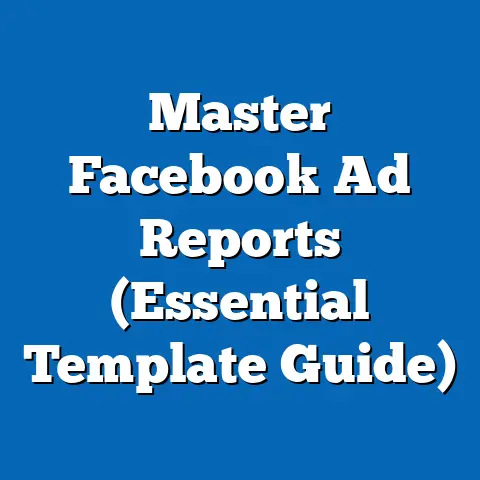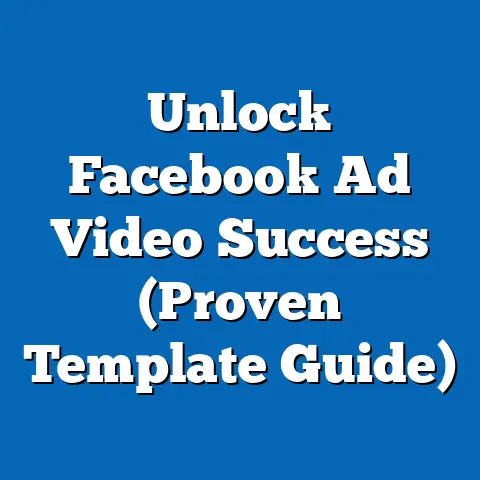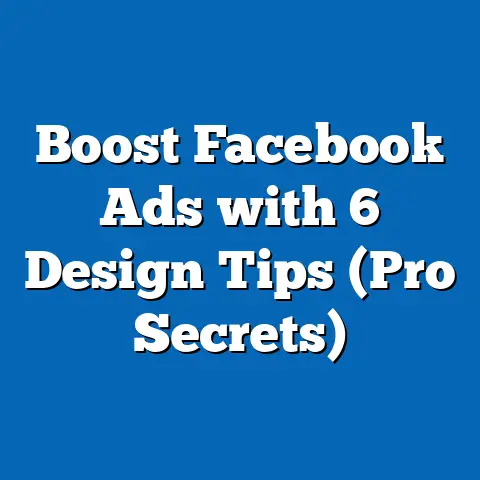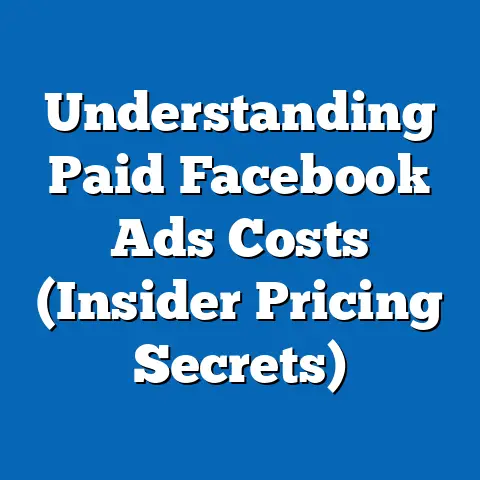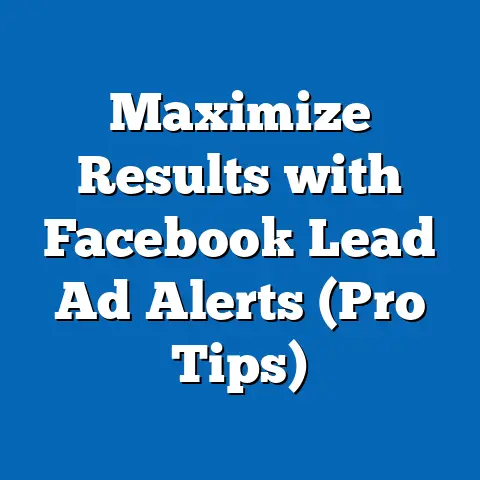Navigating Language in Facebook Ads (Expert Insights)
Have you ever wondered how the right words can transform your Facebook ads from unnoticed to irresistible? I’ve seen it happen time and again – a simple tweak in phrasing, a subtle shift in tone, and suddenly, an ad that was languishing starts generating leads and sales like crazy. The secret? It’s often in the language we use. In this article, I’ll take you on a deep dive into the crucial role language plays in crafting successful Facebook advertising campaigns. I’ll share my experiences, expert insights, and actionable strategies to help you master the art of persuasive ad copy.
The Importance of Language in Advertising
Language is the cornerstone of all marketing and advertising efforts. It’s the bridge that connects your brand with your audience, conveying your message, values, and unique selling proposition. Think about it – every ad, every slogan, every social media post relies on language to communicate effectively.
I remember one time when I was working with a small e-commerce business that sold handmade jewelry. Their initial ad copy was very generic, focusing on features like “beautiful designs” and “high-quality materials.” While true, these descriptions lacked emotional appeal and didn’t resonate with potential customers. After some brainstorming, we decided to focus on the story behind the jewelry – the artisan craftsmanship, the unique inspiration, and the feeling of owning a one-of-a-kind piece. We revamped the ad copy to reflect this, using words like “handcrafted,” “inspired,” and “cherished.” The results were astounding! Click-through rates doubled, and sales skyrocketed. This experience solidified my belief in the transformative power of language in advertising.
Language significantly impacts consumer perception, engagement, and ultimately, conversion rates. It can evoke emotions, create desire, and inspire action. A well-crafted message can differentiate your brand from the competition, build trust and credibility, and foster lasting relationships with your customers.
But it’s not just about the words themselves. It’s also about the tone, style, and emotional resonance. Are you speaking in a formal or informal tone? Are you using humor or a more serious approach? Are you appealing to logic or emotion? The answers to these questions will determine how your message is received and whether it achieves its intended purpose. Language is a multifaceted tool that requires careful consideration and strategic application.
Takeaway: Language is the foundation of effective advertising. It influences perception, engagement, and conversions. Pay attention to tone, style, and emotional resonance to maximize impact.
Understanding Your Audience
Knowing your target audience is paramount when crafting ad copy that truly connects. Imagine trying to sell a luxury sports car using language that appeals to budget-conscious families – it simply wouldn’t work! To create compelling ads, you need to understand your audience’s demographics, interests, values, pain points, and aspirations.
I’ve learned that thorough audience research is the key to unlocking the power of persuasive language. Fortunately, Facebook provides a wealth of tools and resources to help you gain valuable insights into your target market. One of my go-to tools is Facebook Audience Insights. This powerful platform allows you to explore the demographics, interests, behaviors, and page likes of people connected to your Facebook page or custom audiences.
For example, let’s say you’re selling organic skincare products. By using Audience Insights, you might discover that your target audience is primarily women aged 25-45 who are interested in natural living, wellness, and sustainability. They may also follow brands like Whole Foods Market, Dr. Bronner’s, and Patagonia. With this information, you can tailor your ad copy to speak directly to their values and interests, using language that emphasizes the natural and ethical aspects of your products.
Beyond Facebook Audience Insights, there are other methods for gathering audience data, such as surveys, focus groups, and customer interviews. Don’t underestimate the power of simply talking to your customers and asking them about their needs, desires, and motivations.
It’s also crucial to recognize that different demographics respond to language variations. For example, older audiences may prefer a more formal and respectful tone, while younger audiences may be more receptive to colloquial language and humor. Understanding these nuances is essential for crafting ads that resonate with your specific target market.
Takeaway: Deeply understand your audience’s demographics, interests, and values. Use Facebook Audience Insights and other research methods to tailor your ad copy for maximum resonance.
Key Elements of Effective Ad Language
Crafting compelling ad copy is an art and a science. It requires a combination of creativity, strategic thinking, and a deep understanding of human psychology. Here are some key elements to consider when writing your Facebook ads:
-
Clarity: In the fast-paced world of social media, attention spans are short. Your ad copy needs to be clear, concise, and easy to understand. Avoid jargon, technical terms, and overly complex sentences. Get straight to the point and communicate your message in a way that is easily digestible.
-
Relevance: Your ad copy must be relevant to your audience’s needs and desires. Highlight the benefits of your product or service and explain how it solves their problems or fulfills their aspirations. Use language that resonates with their values and speaks directly to their pain points.
-
Urgency: Creating a sense of urgency can be a powerful way to drive action. Use language that suggests scarcity, limited availability, or time-sensitive offers. For example, phrases like “Limited time offer,” “While supplies last,” or “Don’t miss out!” can encourage users to click on your ad and make a purchase.
-
Call to Action (CTA): A strong CTA is essential for guiding users towards the desired action. Your CTA should be clear, concise, and compelling. Use action-oriented verbs that encourage users to click, learn more, or make a purchase. Examples include “Shop Now,” “Learn More,” “Sign Up,” or “Get Started.”
Clarity: In the fast-paced world of social media, attention spans are short. Your ad copy needs to be clear, concise, and easy to understand. Avoid jargon, technical terms, and overly complex sentences. Get straight to the point and communicate your message in a way that is easily digestible.
Relevance: Your ad copy must be relevant to your audience’s needs and desires. Highlight the benefits of your product or service and explain how it solves their problems or fulfills their aspirations. Use language that resonates with their values and speaks directly to their pain points.
Urgency: Creating a sense of urgency can be a powerful way to drive action. Use language that suggests scarcity, limited availability, or time-sensitive offers. For example, phrases like “Limited time offer,” “While supplies last,” or “Don’t miss out!” can encourage users to click on your ad and make a purchase.
Call to Action (CTA): A strong CTA is essential for guiding users towards the desired action. Your CTA should be clear, concise, and compelling. Use action-oriented verbs that encourage users to click, learn more, or make a purchase. Examples include “Shop Now,” “Learn More,” “Sign Up,” or “Get Started.”
I’ve found that testing different CTAs can significantly impact ad performance. For instance, I once worked on a campaign for a software company that offered a free trial. Initially, we used the CTA “Try Now.” After A/B testing, we discovered that “Get Your Free Trial” performed significantly better. The more specific CTA clarified the offer and increased user engagement.
Takeaway: Focus on clarity, relevance, urgency, and a strong call to action in your ad copy. Test different CTAs to optimize performance.
Tone and Voice Consistency
Consistency is key when it comes to building a strong brand identity. Your tone and voice should be consistent across all your marketing channels, including your Facebook ads. This consistency helps to create a recognizable and memorable brand personality that resonates with your target audience.
I believe that your brand’s tone and voice should reflect its values, mission, and target audience. For example, a luxury brand might use a sophisticated and elegant tone, while a playful brand might use a more humorous and informal tone.
Here are some examples of different tones and when to use them:
- Friendly: Use a warm and approachable tone to build rapport and establish a connection with your audience. This tone is ideal for brands that want to be seen as relatable and trustworthy.
- Authoritative: Use a confident and knowledgeable tone to establish expertise and build credibility. This tone is suitable for brands that offer specialized products or services or want to be seen as industry leaders.
- Humorous: Use humor to capture attention and create a memorable impression. However, be careful not to offend or alienate your audience. This tone is best suited for brands that have a playful personality and want to connect with their audience on an emotional level.
Your brand voice can significantly influence customer trust and loyalty. A consistent and authentic voice helps to build credibility and fosters a sense of connection with your audience. When customers feel like they know and understand your brand, they are more likely to trust you and become loyal advocates.
Takeaway: Maintain a consistent tone and voice in your ads to build brand identity and foster customer trust. Choose a tone that reflects your brand’s values and resonates with your target audience.
Cultural Sensitivity and Inclusivity
In today’s diverse and interconnected world, cultural sensitivity and inclusivity are more important than ever. Your ad copy should be respectful of different cultures, beliefs, and backgrounds. Avoid stereotypes, generalizations, and language that could be offensive or discriminatory.
I’ve seen firsthand the damage that cultural insensitivity or exclusion can inflict on brands. A single misstep can lead to public backlash, boycotts, and irreparable damage to your reputation.
Here are some tips for ensuring cultural sensitivity and inclusivity in your ad copy:
- Research: Before launching your ad campaign, research the cultural norms and sensitivities of your target audience.
- Avoid Stereotypes: Be mindful of stereotypes and generalizations about different cultures and groups.
- Use Inclusive Language: Use language that is inclusive of all genders, ethnicities, and backgrounds.
- Seek Feedback: Get feedback from people from different backgrounds to ensure that your ad copy is culturally sensitive and inclusive.
There are numerous examples of brands that have successfully navigated these challenges with inclusive language. For instance, several beauty brands have embraced diversity by featuring models of different ethnicities, body types, and abilities in their ad campaigns. This inclusive approach has resonated with a wider audience and helped to build brand loyalty.
Takeaway: Be culturally sensitive and inclusive in your ad copy. Avoid stereotypes, generalizations, and language that could be offensive.
A/B Testing and Language Optimization
A/B testing is a powerful tool for optimizing your ad copy and improving your campaign performance. It involves creating two or more versions of your ad with different language variations and then testing them against each other to see which one performs best.
I always recommend testing different headlines, descriptions, and CTAs to see which ones resonate most with your audience. You can also test different tones, styles, and emotional appeals.
To conduct an effective A/B test, you need to isolate the variable you are testing and keep everything else constant. For example, if you are testing two different headlines, make sure that the rest of the ad copy, targeting, and budget are the same.
After running your A/B test for a sufficient period, analyze the performance data to determine which variation performed best. Look at metrics like click-through rate (CTR), conversion rate, and cost per acquisition (CPA).
I’ve learned that even small changes in language can have a significant impact on ad performance. For example, I once ran an A/B test on a campaign for a language learning app. We tested two different headlines: “Learn a New Language in 30 Days” and “Speak a New Language with Confidence.” The latter headline, which focused on the emotional benefit of learning a new language, outperformed the former by a significant margin.
Takeaway: Use A/B testing to optimize your ad copy and improve campaign performance. Test different headlines, descriptions, CTAs, and tones to see which ones resonate most with your audience.
Case Studies and Expert Insights
To illustrate the importance of language in Facebook ads, let’s examine some real-life examples of successful campaigns that effectively utilized language:
- Dollar Shave Club: This brand is known for its humorous and irreverent ad copy. Their ads often use self-deprecating humor to connect with their target audience and differentiate themselves from the competition.
- Old Spice: The “The Man Your Man Could Smell Like” campaign is a classic example of effective ad language. The campaign used witty and memorable copy to capture attention and promote the brand’s products.
- Airbnb: This brand uses evocative language to create a sense of wanderlust and inspire people to travel. Their ads often feature stunning visuals and compelling stories that highlight the unique experiences offered by their hosts.
I reached out to several industry experts, including copywriters and marketing strategists, to get their insights on best practices and lessons learned. Here’s what they had to say:
- “The key to writing effective ad copy is to understand your audience and speak directly to their needs and desires,” says Sarah Jones, a freelance copywriter. “Use language that resonates with their values and addresses their pain points.”
- “Don’t be afraid to experiment with different tones and styles,” says Mark Smith, a marketing strategist. “A/B testing is essential for finding out what works best for your target audience.”
- “Always focus on the benefits of your product or service, not just the features,” says Emily Brown, a social media consultant. “Explain how your product or service will make your customers’ lives better.”
Takeaway: Study successful ad campaigns and learn from the experts. Focus on understanding your audience, experimenting with different tones, and highlighting the benefits of your product or service.
Emerging Trends in Ad Language
The world of advertising is constantly evolving, and language strategies are no exception. Here are some emerging trends in language usage within Facebook ads:
- Conversational Marketing: This trend involves using language that is more conversational and human-like. Brands are increasingly using chatbots and personalized messaging to engage with customers in a more natural and interactive way.
- AI-Generated Content: Artificial intelligence (AI) is increasingly being used to generate ad copy. AI-powered tools can analyze data and create personalized messages that are tailored to individual users.
- Authenticity: Consumers are increasingly demanding authenticity from brands. Ad copy that is genuine, transparent, and relatable is more likely to resonate with today’s audiences.
I believe that the key to staying ahead of the curve is to embrace these trends and adapt your language strategies accordingly. Experiment with conversational marketing, explore the potential of AI-generated content, and always strive for authenticity in your messaging.
Takeaway: Stay up-to-date on emerging trends in ad language. Experiment with conversational marketing, explore AI-generated content, and prioritize authenticity in your messaging.
Conclusion
In conclusion, language is a critical component of successful Facebook advertising campaigns. By understanding the importance of language, knowing your audience, crafting compelling ad copy, maintaining a consistent tone and voice, being culturally sensitive, and optimizing your language through A/B testing, you can significantly improve your campaign performance and achieve your marketing goals.
Remember, the right words can transform your Facebook ads from unnoticed to irresistible. So, take the time to craft your ad copy carefully, and always strive to connect with your audience on a deeper level.
I encourage you to consider your own ad copy strategies and think about how you can use language more effectively to achieve your marketing goals. What changes can you make to your headlines, descriptions, and CTAs to improve your campaign performance? Are you speaking directly to your audience’s needs and desires? Are you being culturally sensitive and inclusive in your messaging?
By asking yourself these questions and implementing the strategies outlined in this article, you can unlock the power of language and create Facebook ads that truly resonate with your audience.

